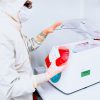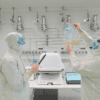The development of cell and gene therapies (CGT) holds enormous promise for treating many different diseases. The success of CAR-T therapies in treating blood cancers has seen exponential growth in all areas of the sector with over 1000 clinical trials currently ongoing across the globe.
However, as exciting as the possibilities are for CGT, there’s one factor that every biotech firm must contend with—time. There’s no avoiding the reality that getting from drug discovery to in-human trials is a very lengthy process. Research and development take years before clinical trials can even begin, followed by more years as the trials are conducted. This, of course, not only requires patience but significant funding to support the process before any possibility of commercialization comes into sight.
The challenge for developers is to discover ways to accelerate this process.
Where are the opportunities to speed up?
1. Product lifecycle management
It’s vital to consider your end goal at the beginning of the process. Many developers focus purely on getting to that initial clinical trial without thinking about how scalable the production method is. As development occurs, there needs to be a strategy for scaling and driving down costs as the process evolves. In short, a production method that can’t be cost-effectively scaled up is simply not commercial.
Equally important is agreeing on models, definitions, and measuring parameters. You need to define your target product profile, design your clinical protocols, and develop a process that allows you to collect data to drive your program forward.
Be aware of the differences between product development and commercial manufacturing. Discovery processes may be suitable when operating in the early stages, but new methods and tools may need to be found to make large scale production feasible. Early on, there are few restrictions on cost or the use of exotic reagents, but commercialization requires adhering to Current Good Manufacturing Practice regulations (CGMP) that avoid unsafe, unregulated components. If the starting materials or reagents aren’t easily accessible, it’ll make scaling up the process virtually impossible. That’s why it’s prudent to have multiple potential suppliers to help avoid the possibility of material shortages.
Partnering with an experienced Contract Development and Manufacturing Organization (CDMO) early in the process is one way to ensure you make the right technology decisions at every stage of development.
2. Understanding the regulatory environment
An important factor to consider when planning the transition from research to translational activities is the addition of compliance and regulatory requirements. For first-in-human and phase I studies, patient safety and meeting the obligations of clinical trial ethics are paramount.
During the transition to phase II and beyond, it’s necessary to apply an increasingly higher standard of cGMP to the product and surrounding processes. This will help you avoid quality or regulatory issues in late-stage development that will delay the project and add cost.
The rapid growth of the CGT sector means that regulations are ever evolving, and the appearance of some unproven “cell-based therapies” in the market only adds to the confusion. There’s a growing need for all cell-based interventions to be comprehensively evaluated to ensure they have a justified level of risk, have solid evidence of efficacy, and demonstrate a clear scientific rationale for that effect.
Developers should be prepared for additional regulatory oversight to occur in the future. However, in time, as more proven products enter the market, it’s likely that regulatory standards—while still stringent—will become more consistent.
Beginning a dialogue with the appropriate regulatory bodies as early as possible during development, so that you understand their requirements, will help prepare you when reaching the approval process. There are significant variations between regional jurisdictions so the requirements for one market may not satisfy those of other markets. Again, an experienced CDMO is invaluable in helping you navigate the variety of global regulations.
It’s beneficial to look for expedited pathways, or geographies with reciprocal approval arrangements. For instance, Australia offers one of the fastest routes to the clinic anywhere in the world for those with US IND or EU CTD approval, while still providing fully evaluable data and clinical quality standards equal to those in the US and Europe.
While some regulatory bodies offer accelerated review and approval schemes, note that they carry the risk of deferring stringent manufacturing review, which may require costly changes later and can impact earlier data validity.
You should also factor in the possibilities of government incentives or grants which could make partnering with an offshore CDMO commercially advantageous. For example, the Australian Government offers an R&D tax incentive that allows Australian entities—including local subsidiaries—to recover the cost of R&D expenses.
3. Combining clinical trial phases
It’s sometimes possible to combine phases of a clinical trial to make the evaluation process more efficient. The use of adaptive design when planning a clinical trial has been increasing across the sector. This involves utilizing the results accumulating in a trial to modify the trial’s course in accordance with pre-specified rules. For instance, seeking efficacy data (phase II) once a minimum safety threshold (phase I) has been met.
While adaptive design can increase efficiency and reduce time, trials conducted this way may carry additional risk and potentially higher cost. They necessitate that all products meet phase II requirements, rather than the less restrictive phase I. They also require careful planning to ensure the interpretation and reporting of results remain accurate.
4. Planning for access to patients
As you consider your approach to in-human trials it’s important to start looking early on for specific patient populations and carefully managing their experience. Unlike traditional therapies, CGT requires patient engagement and support over a much longer treatment period.
A significant challenge is seeking and gaining clinical investigator interest and hospital approval to ensure you have a site at which you can run your trial. This has been especially difficult during the pandemic, with fewer clinical trials being run. It’s also difficult to find manufacturing partners, such as CDMOs, that are integrated into clinical sites and hospitals, to offer you easier access to cell harvesting facilities.
The pandemic has also made clear the benefits of looking internationally for partners. Australia, for example, has had little disruption to clinical trials during COVID-19, with continued access to patients and hospitals. It’s worth investigating all your options.
5. Satisfying investor expectations
Developing an effective manufacturing process is key to securing investment. Unsurprisingly, investors want to be sure that the process can scale up cost-effectively, so that it can be brought to market at an appropriate cost.
At the same time, data remains a powerful motivator for investors. In a recent survey by the International Society for Cell & Gene Therapy (ISCT) and Bloomberg Intelligence, the highest ranked investment consideration was the existence of clinically significant data.
It takes time to save time
As you can see, there are several opportunities to make the move from drug discovery to in-human trials more efficient. But they do have one thing in common—the need to plan.
Whether it’s considering how you’ll scale up, what regulatory challenges you’ll face, or how best to approach your trials, the time you spend making the right decisions early on will be more than compensated for by the efficiencies you achieve later.
A faster path exists. Take the time to find it.








